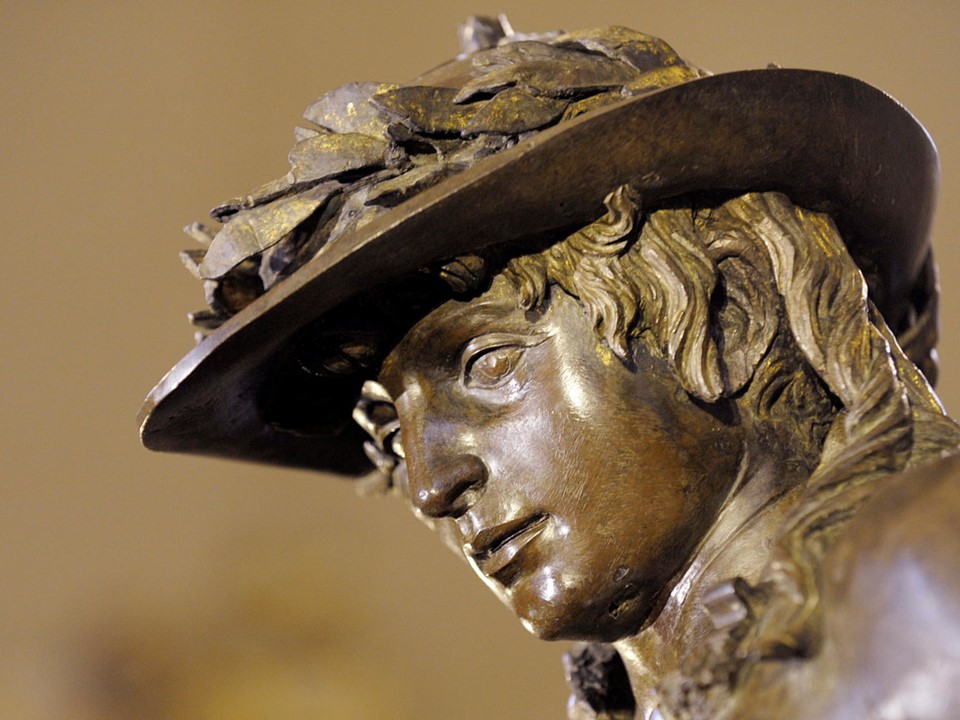
David, c. 1430, Bronze, Height: 158 cm, Museo Nazionale del Bargello, Florence
“Speak, damn you, speak!” Donatello allegedly cried to his sculptures whenever he desired depth in their expression! Teaching with Donatello is a set of student activities and worksheets inspired by the great Italian artist I much admire. I visited sites in Florence where Donatello left his mark, several times so far, and my hope is that I will be fortunate to visit them again. Every time I come face to face with his work, I think of Henry Moore, who “every day he strove to surpass Donatello, failed, but woke the next morning elated for another try…” http://www.donatellosculptures.com/quotes/ and https://www.theartstory.org/artist/giotto/life-and-legacy/
When the time comes for me to introduce my students to Donatello’s oeuvre I start with Giorgio Vasari and his exciting stories.
I start with… “He may be said to have been the first to illustrate the art of sculpture among the moderns…” discussing how ancient Greek or Roman sculpture was a great source of inspiration for Donatello and continue with… “Donatello made his figures in such a way that in the room where he worked they did not look half as well as when they were put in their place.”
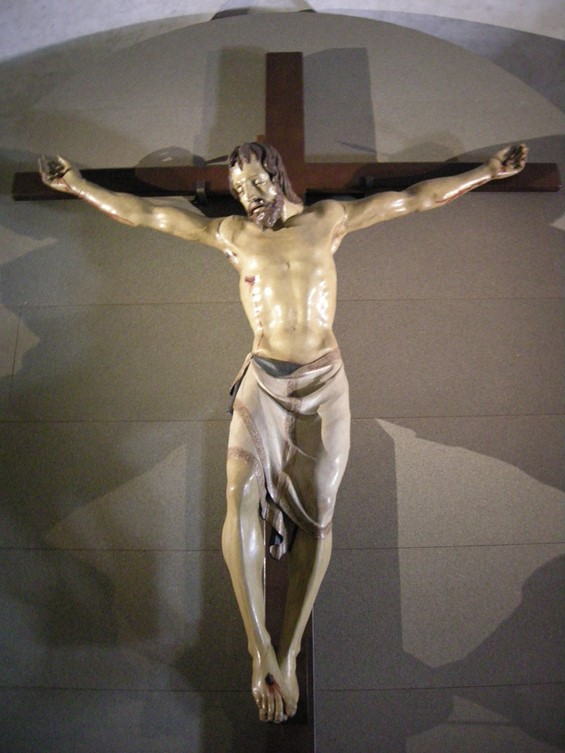
Santa Croce Crucifix, c.1406-1408, Polychrome Wood, Height: 165 cm, Capella Bardi di Vernio, Santa Croce, Florence
The famous anecdotal story of Donatello’s Crucifixion and his “contest” with Brunaleschi is important to review and stress… “… for the church of S. Croce in Florence…he (Donatello) made a crucifix of wood, which he carved with extraordinary patience; and when it was done, thinking it a very fine piece of work, he showed it to Filippo that he might have his opinion upon it. Filippo, who expected from what Donatello had said to see something better, when he looked at it could not help smiling a little. Donatello, seeing it, prayed him by their friendship to speak his mind truly, upon which Filippo, who was frank enough, replied that he seemed to him to have put on the cross a peasant and not Jesus Christ, who was the man most perfect in everything that ever was born. Donatello, feeling the reproach more bitterly because he had expected praise, replied, “If it were as easy to do a thing as to judge it, my Christ would not look like a peasant; but take some wood yourself and make one.” Filippo without another word returned home, and, saying nothing to any one, set to work upon a crucifix, and aiming to surpass Donatello that he might not condemn himself, he brought it to great perfection after many months. Then one morning he invited Donatello to dine with him. Donatello accepted his invitation, and they went together to Filippo’s house. Coming to the old market, Filippo bought some things and gave them to Donatello, saying, “Go on to the house and wait for me, I am just coming.” So Donatello, going into the house, found Filippo’s crucifix arranged in a good light; and stopping to consider it, he found it so perfect that, overcome with surprise and admiration, he let his apron drop, and the eggs and cheese and all the other things that he was carrying in it fell to the ground and were broken. Filippo, coming in and finding him standing thus lost in astonishment, said, laughingly, “What are you about, Donatello? How are we to dine when you have dropped all the things?” “I,” said Donatello, “have had enough. If you want anything, take it. To you it is given to do Christs, and to me peasants.” https://sourcebooks.fordham.edu/basis/vasari/vasari6.asp
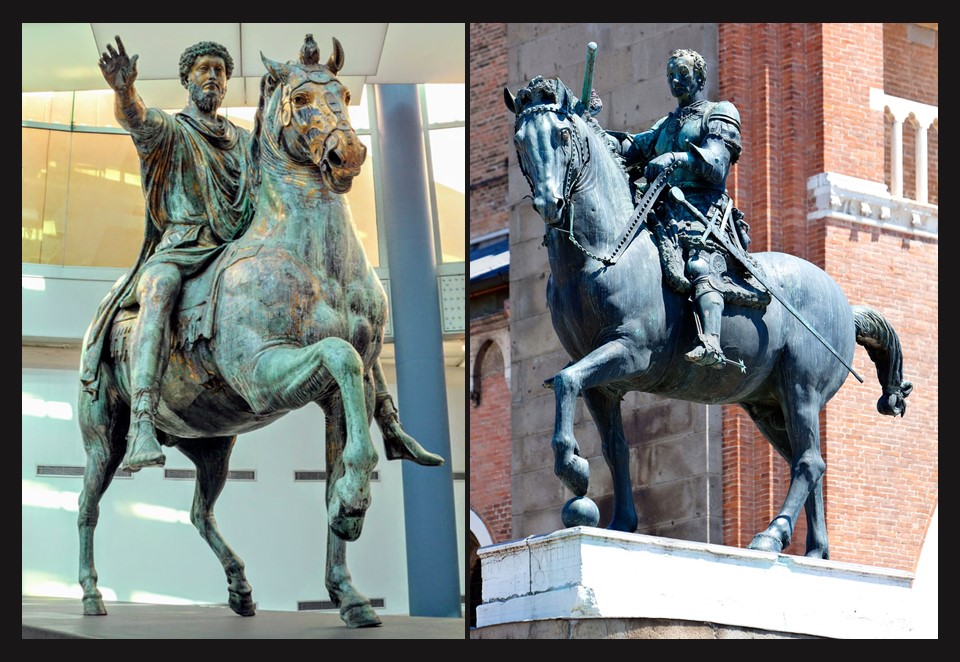
Donatello, 1386-1466,
Statue of Gattamelata, 1447-50, Bronze, 340×390 cm, Piazza del Santo, Padua
I finish my introductory presentation discussing Donatello’s character, the story of Gattamelata, and Padua’s admiration for the artist… “… the Signory of Venice, hearing the fame of him, sent for him to make the monument to Gattamelata in the city of Padua. He undertook it very gladly, and made the statue that stands in the Piazza of S. Antonio, with the horse chafing and neighing, and its proud, spirited rider. Donatello showed himself in this so admirable, both for proportion and execution, that truly it may be compared to any ancient work. The Paduans sought by every means to prevail upon him to become a citizen and to stay there, giving him much work to do; but finding himself considered a marvel, and praised on all sides, he determined to return to Florence, saying if he stayed there longer he should forget all he knew, being praised so much, and that he must return to his own city to be continually found fault with, for this faultfinding would be the cause of his studying more, and thereby winning greater glory.” https://sourcebooks.fordham.edu/basis/vasari/vasari6.asp
Teaching with Donatello Activities…
For a List of “Internet” Lesson Plans, References and Student Activities TeacherCurator put together, please… Click HERE!
For my PowerPoint on Donatello, please… Click HERE!
I always feel confident discussing an artist with my students when I prepare my Steps to Success Lesson Plan Outline…
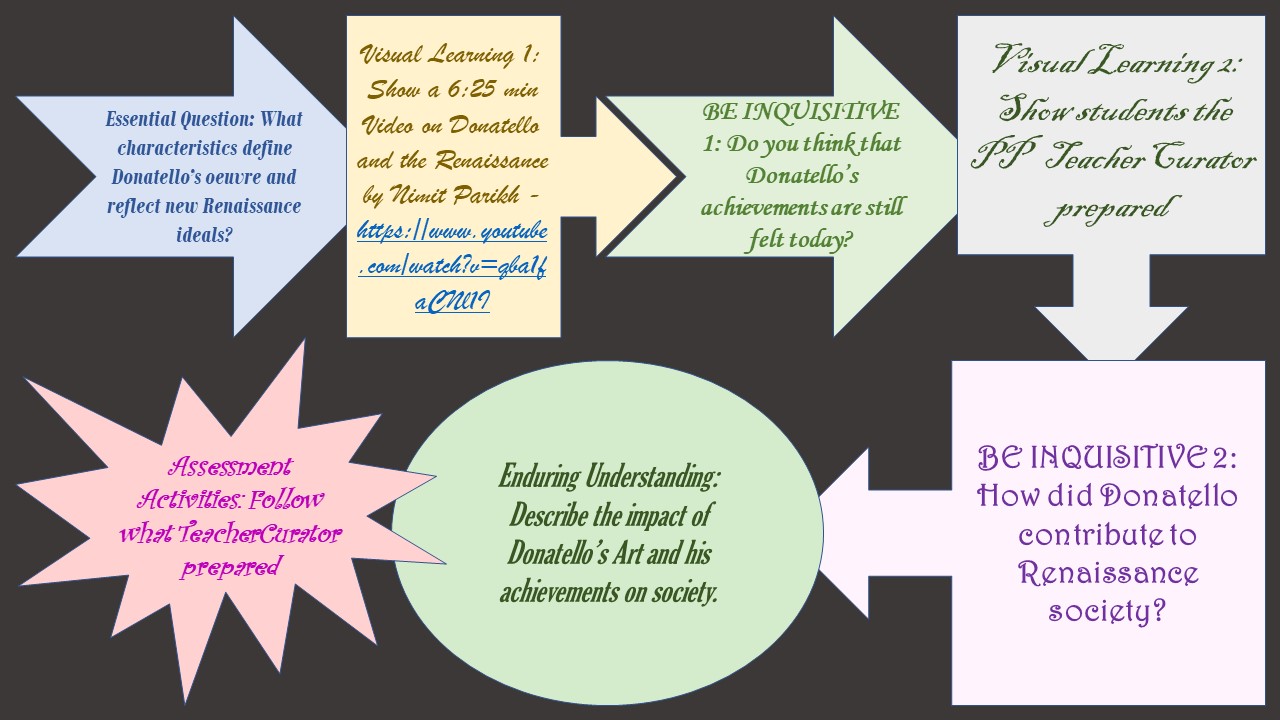
For Donatello’s Gattamelata Student Activity, please… Click HERE! (Student Activity) HERE! (Picture) and HERE! (Worksheet A)
For a WAC (Write Across the Ciciculum) Activity, titled “A Poem for Donatello’s Saint George”, please… Click HERE!
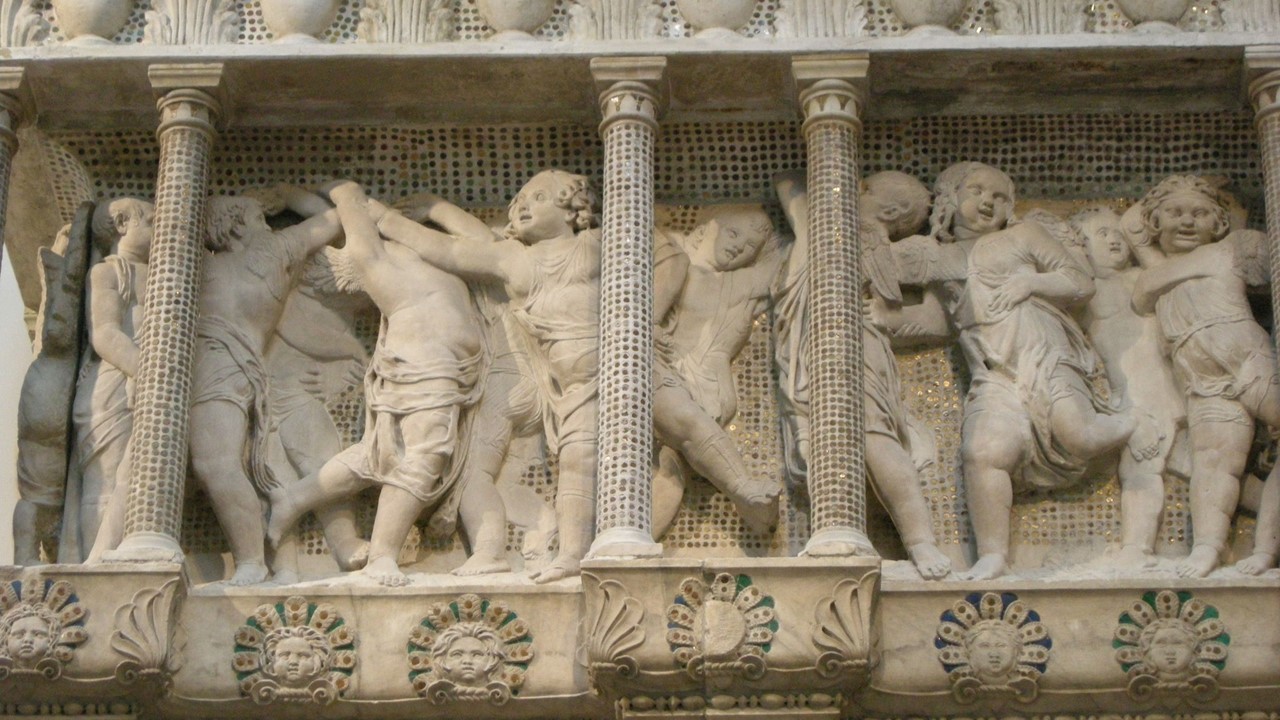
Cantoria, 1431-39, Marble, 348 x 570 cm, Museo dell’Opera del Duomo, Florence
I hope that Teaching with Donatello will prove easy and helpful. Do you think it justifies my BLOG name TeacherCurator?